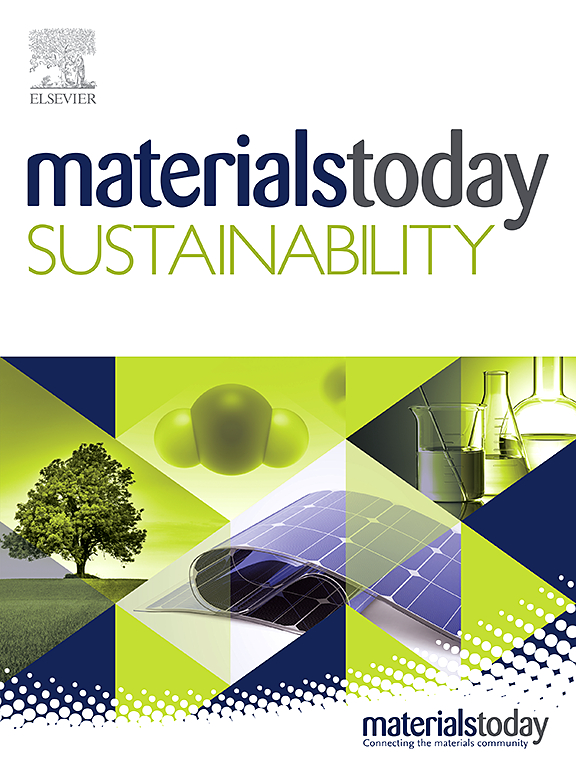单轴压缩条件下煤矸石粗骨料混凝土构成关系的试验研究
IF 7.1
3区 材料科学
Q1 GREEN & SUSTAINABLE SCIENCE & TECHNOLOGY
引用次数: 0
摘要
作为一种有效利用煤矸石(CG)的方法,以煤矸石为粗骨料的混凝土大大减少了对天然骨料的依赖,带来了巨大的环境和经济效益。本研究制备了煤矸石替代率分别为 0、20、40、60、80 和 100%的煤矸石混凝土,并进行了无侧限压缩力学试验,以评估煤矸石粗骨料混凝土(CGC)的应力应变行为和破坏机理。通过扫描电子显微镜(SEM)的微观表征,进一步阐明了煤矸石粗骨料混凝土的微观破坏机理。随着煤矸石掺量的增加,CGC 的单轴压缩破坏模式从剪切破坏转变为纵向劈裂破坏。应力-应变曲线上升段的斜率、峰值应力和弹性模量与煤矸石含量呈负相关,而下降段的斜率、峰值应变和极限应变呈正相关。接下来,在经典构成模型的基础上,我们利用单轴抗压强度和煤矸石含量调整了构成参数。最后,我们引入了一个预测模型,用于预测 CGC 在不同含量水平下的构成抗压行为。该模型与实验数据的一致性非常高。本文章由计算机程序翻译,如有差异,请以英文原文为准。
Experimental study on constitutive relation of coal gangue coarse aggregate concrete under uniaxial compression
As an efficient method for utilizing coal gangue (CG), concrete incorporating coal gangue as coarse aggregate has significantly reduced the reliance on natural aggregates, offering substantial environmental and economic benefits. In this study, coal gangue concrete was prepared with coal gangue replacement rates of 0, 20, 40, 60, 80, and 100%, and mechanical tests under unconfined compression were conducted to evaluate the stress-strain behavior and failure mechanism of coal gangue coarse aggregate concrete (CGC). Utilizing scanning electron microscope (SEM) microscopic characterization, the microscopic failure mechanism of CGC was further elucidated. With increased coal gangue replacement, the CGC's uniaxial compression failure mode shifts from shear to longitudinal splitting failure. The slope, peak stress and elastic modulus of the stress–strain curve's rising section are negatively correlated with the coal gangue content, while the falling section's slope, peak strain and ultimate strain are positively correlated. Next, building upon the classical constitutive model, we adjust the constitutive parameters utilizing the uniaxial compressive strength and coal gangue content. Finally, we introduce a predictive model for the CGC's constitutive compressive behavior across various content levels. There is a notably high agreement between the model and experimental data.
求助全文
通过发布文献求助,成功后即可免费获取论文全文。
去求助
来源期刊

Materials Today Sustainability
Multiple-
CiteScore
5.80
自引率
6.40%
发文量
174
审稿时长
32 days
期刊介绍:
Materials Today Sustainability is a multi-disciplinary journal covering all aspects of sustainability through materials science.
With a rapidly increasing population with growing demands, materials science has emerged as a critical discipline toward protecting of the environment and ensuring the long term survival of future generations.
 求助内容:
求助内容: 应助结果提醒方式:
应助结果提醒方式:


